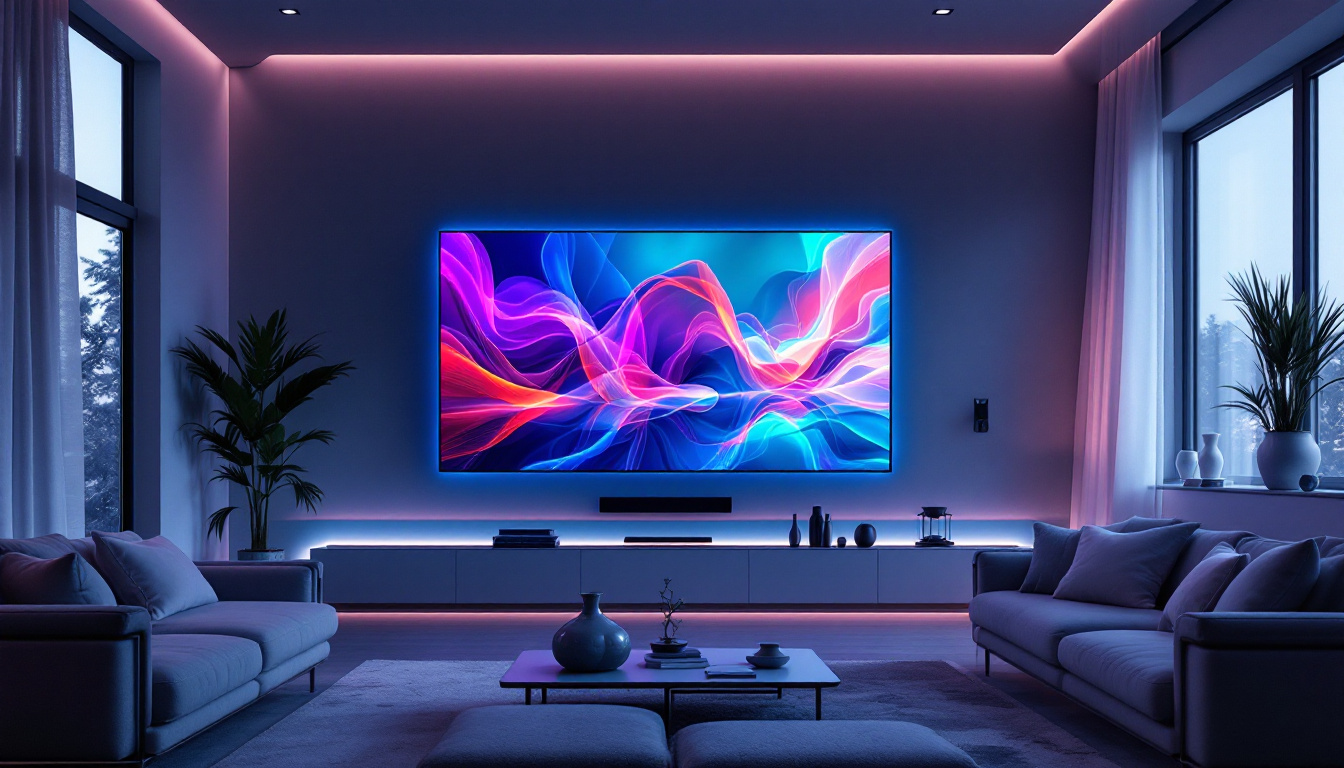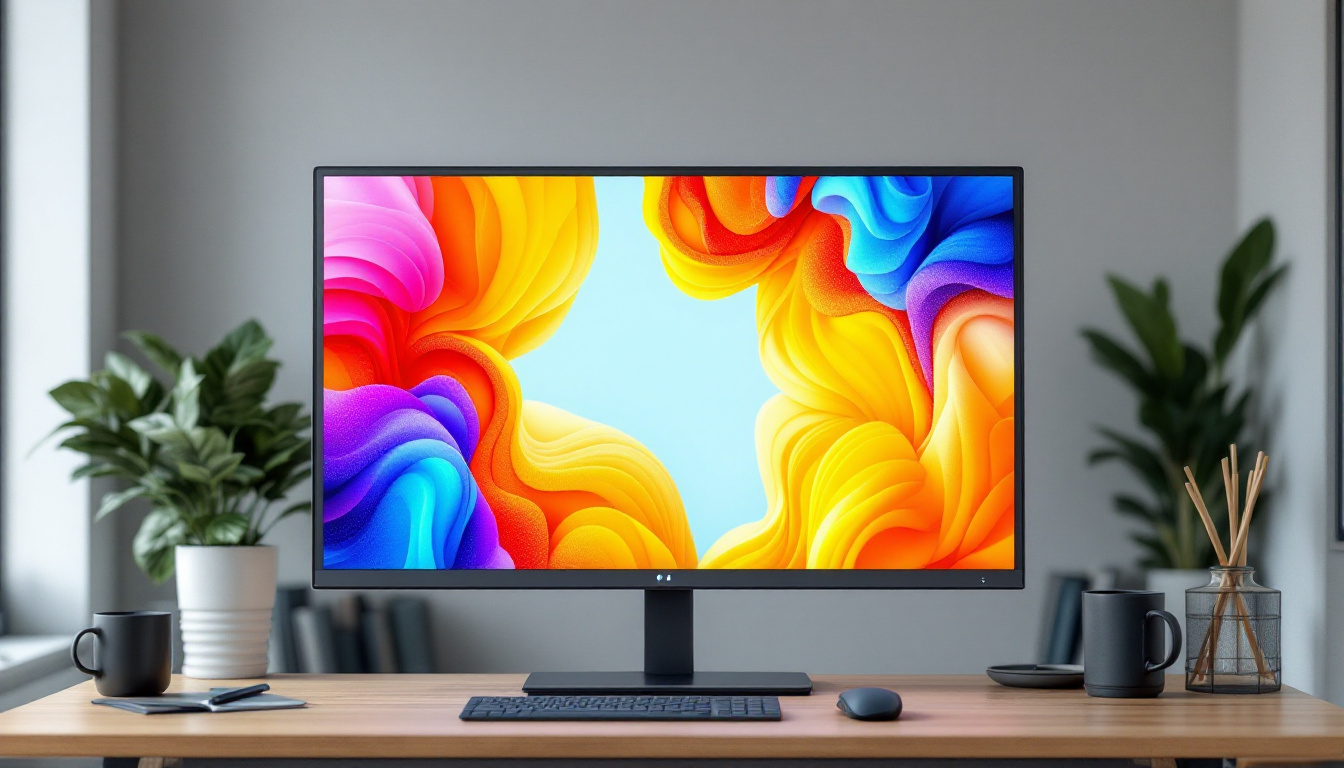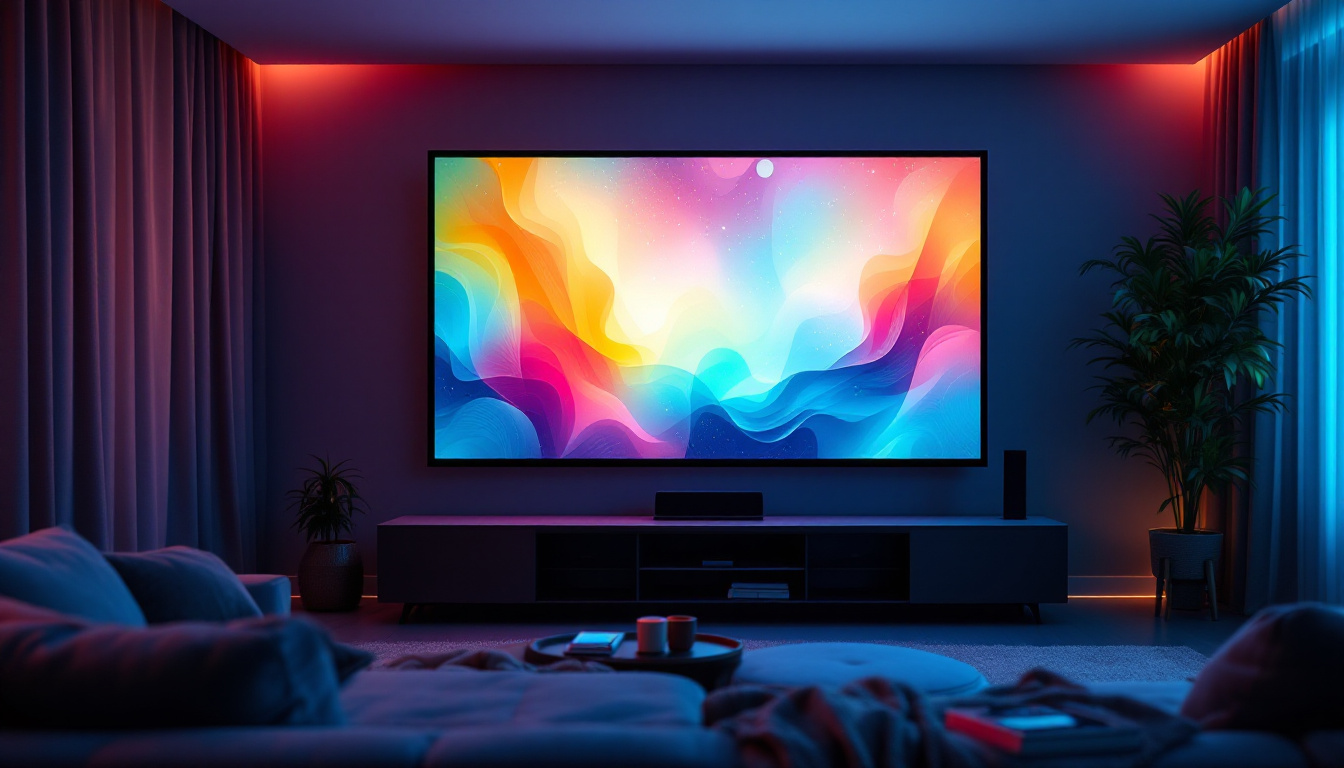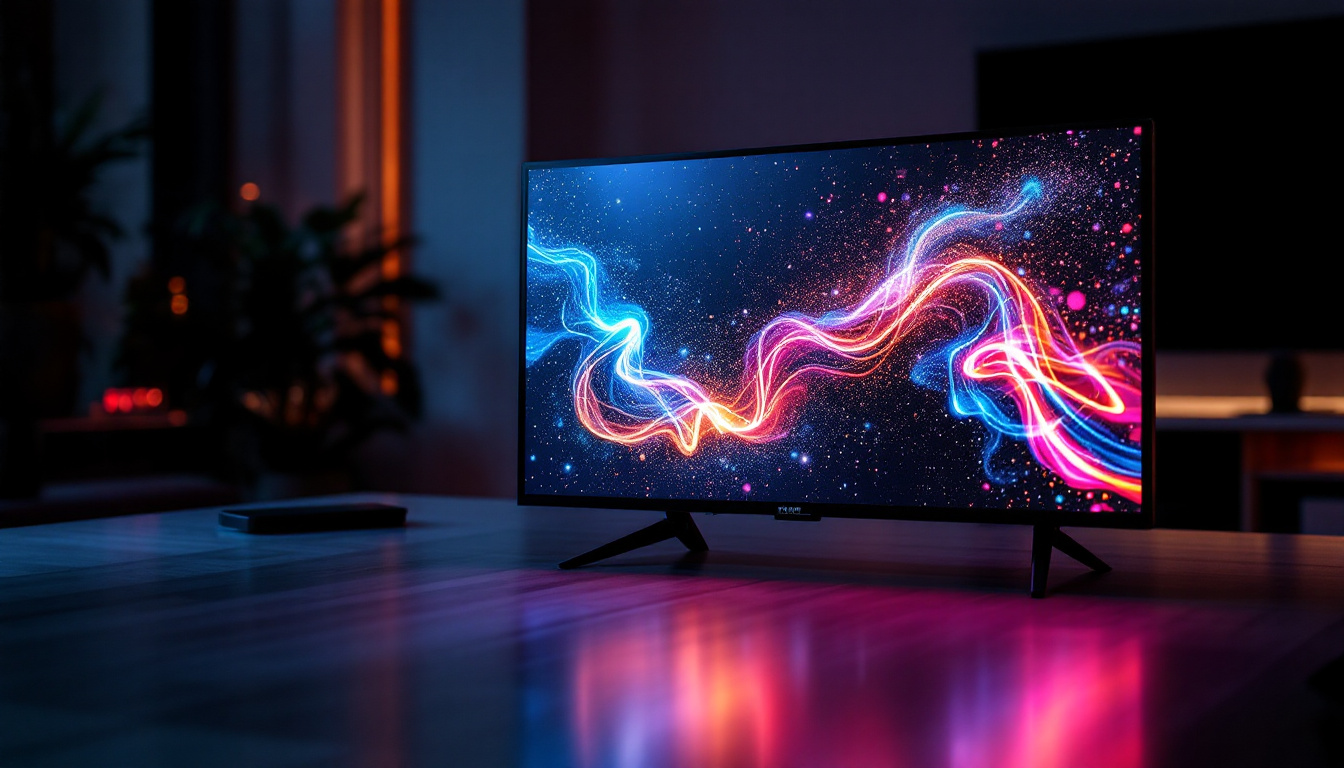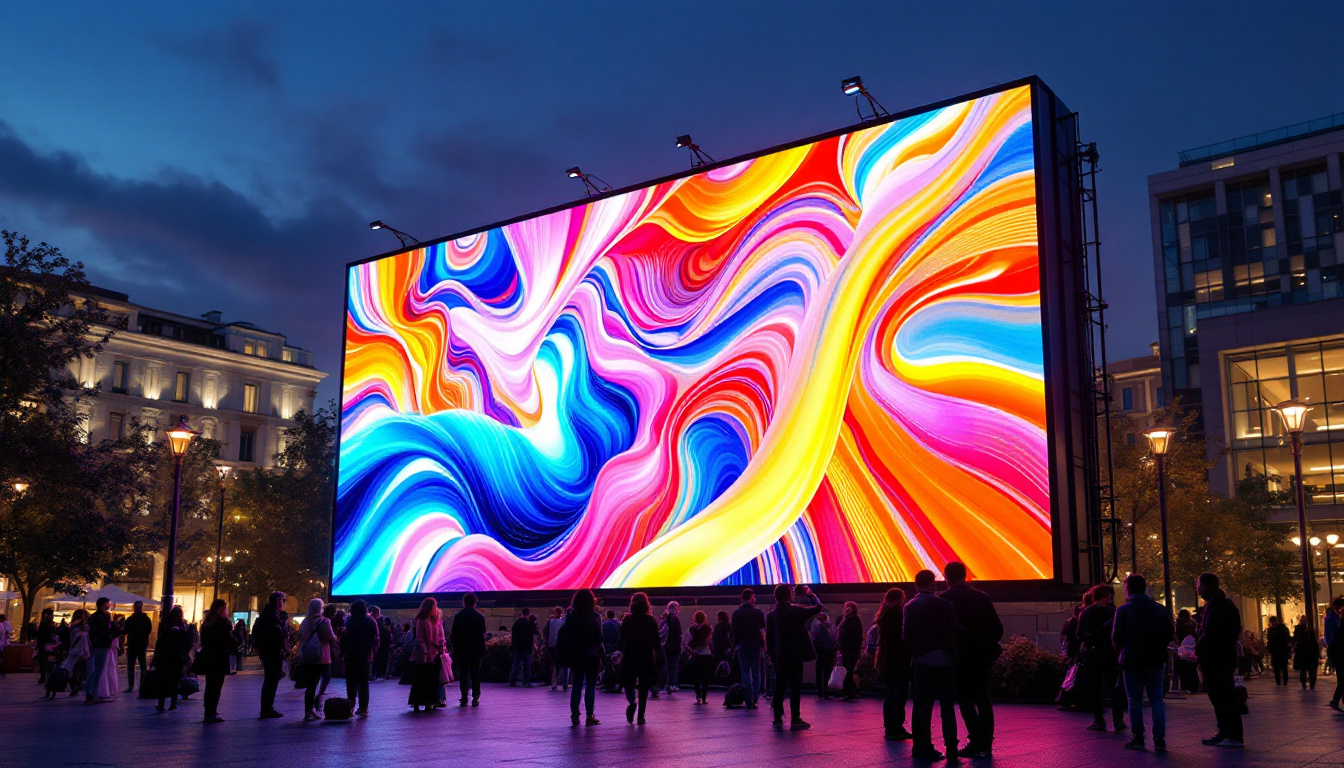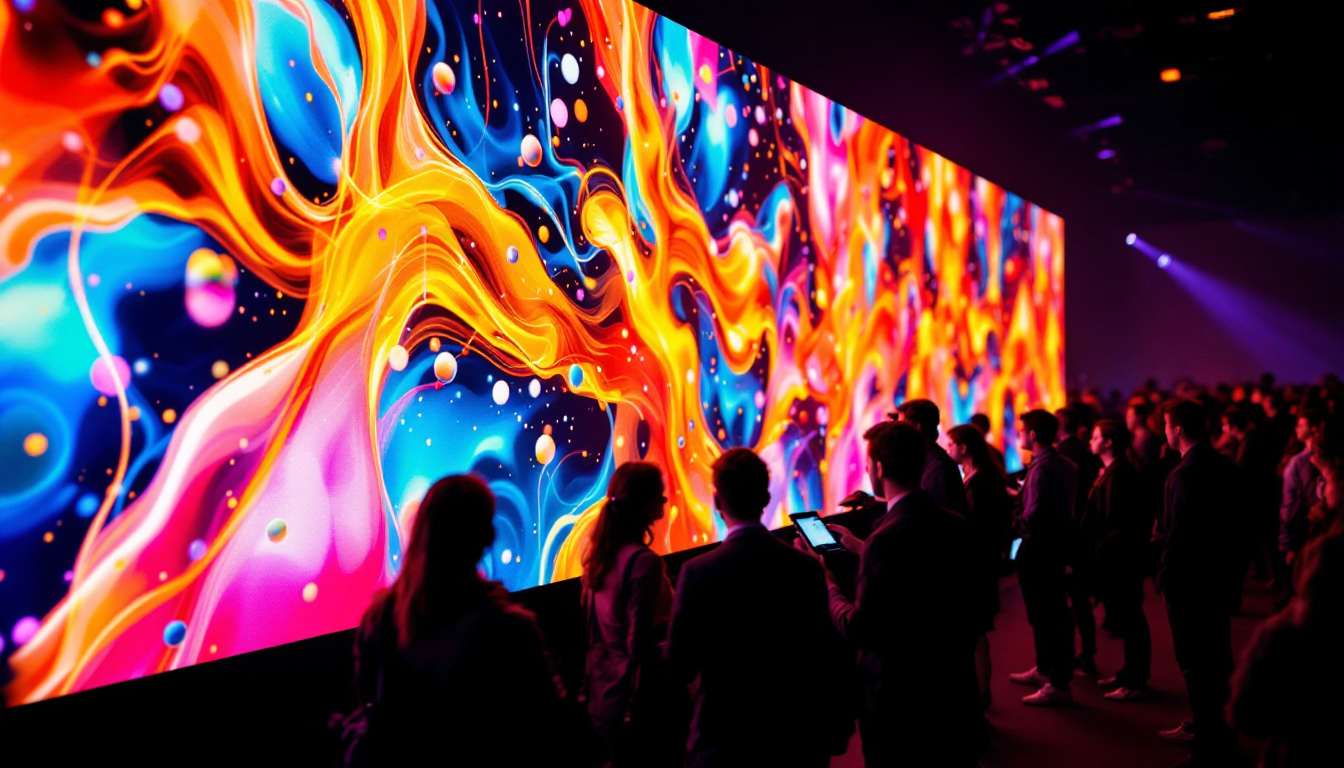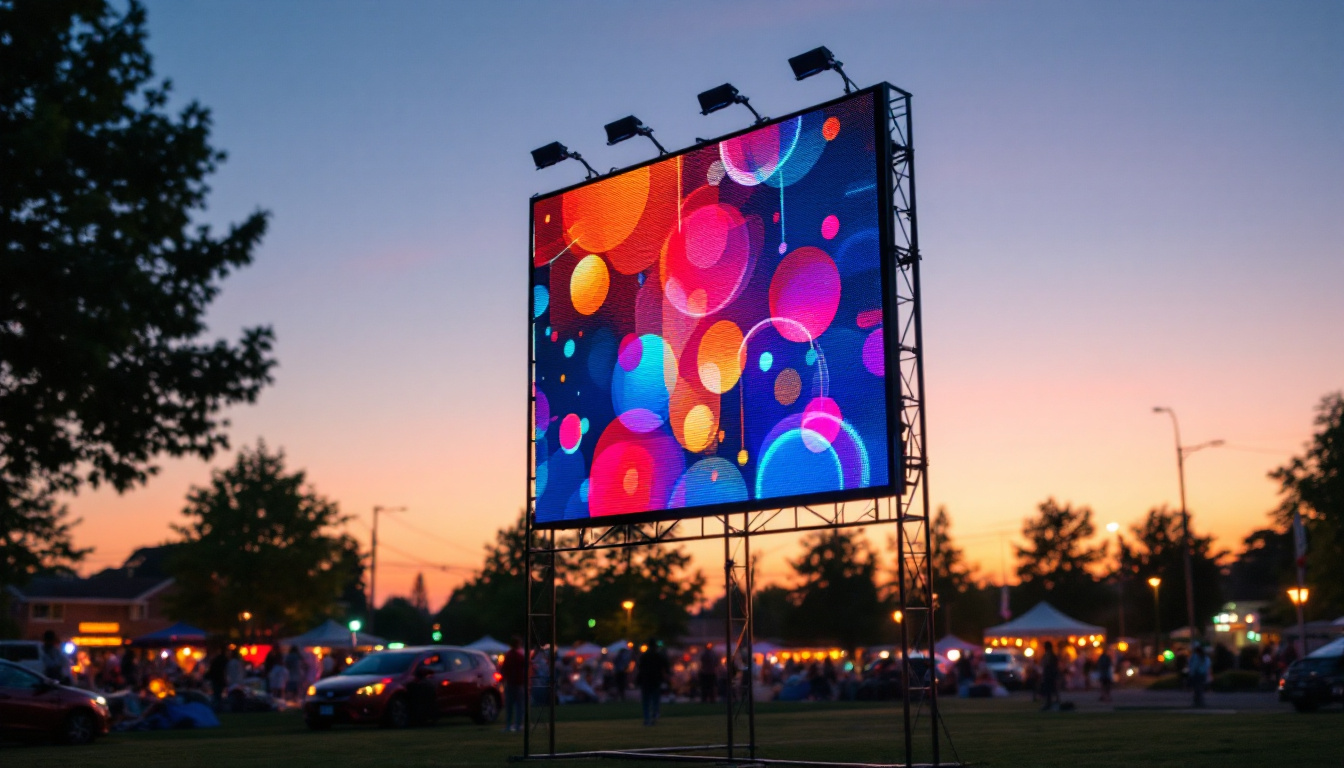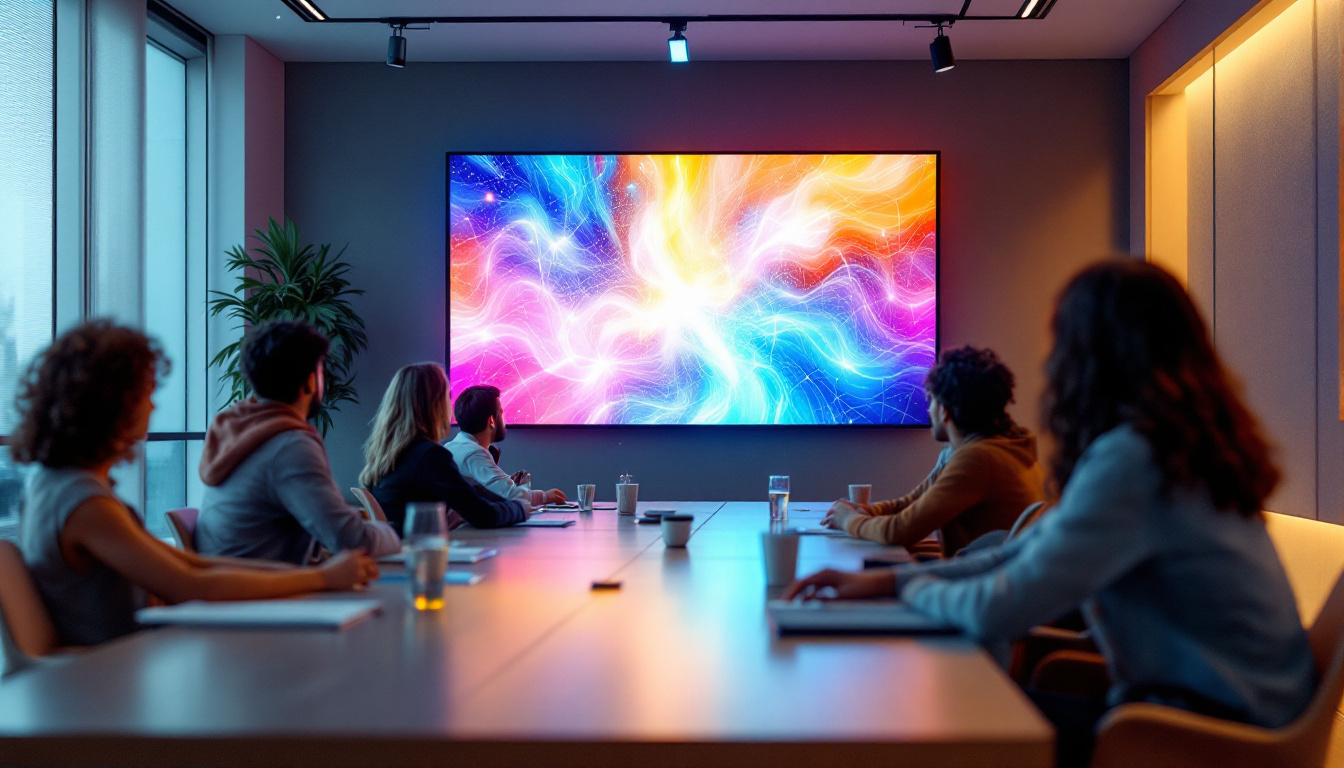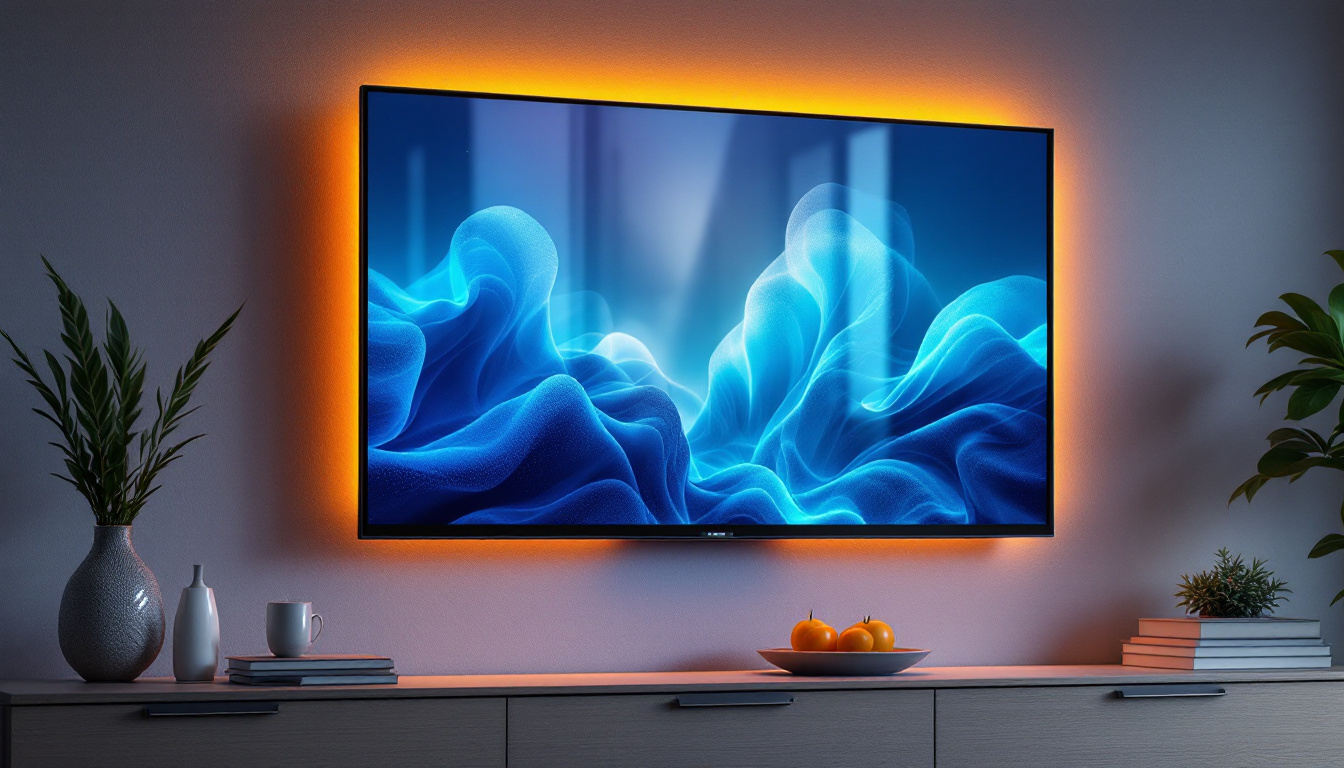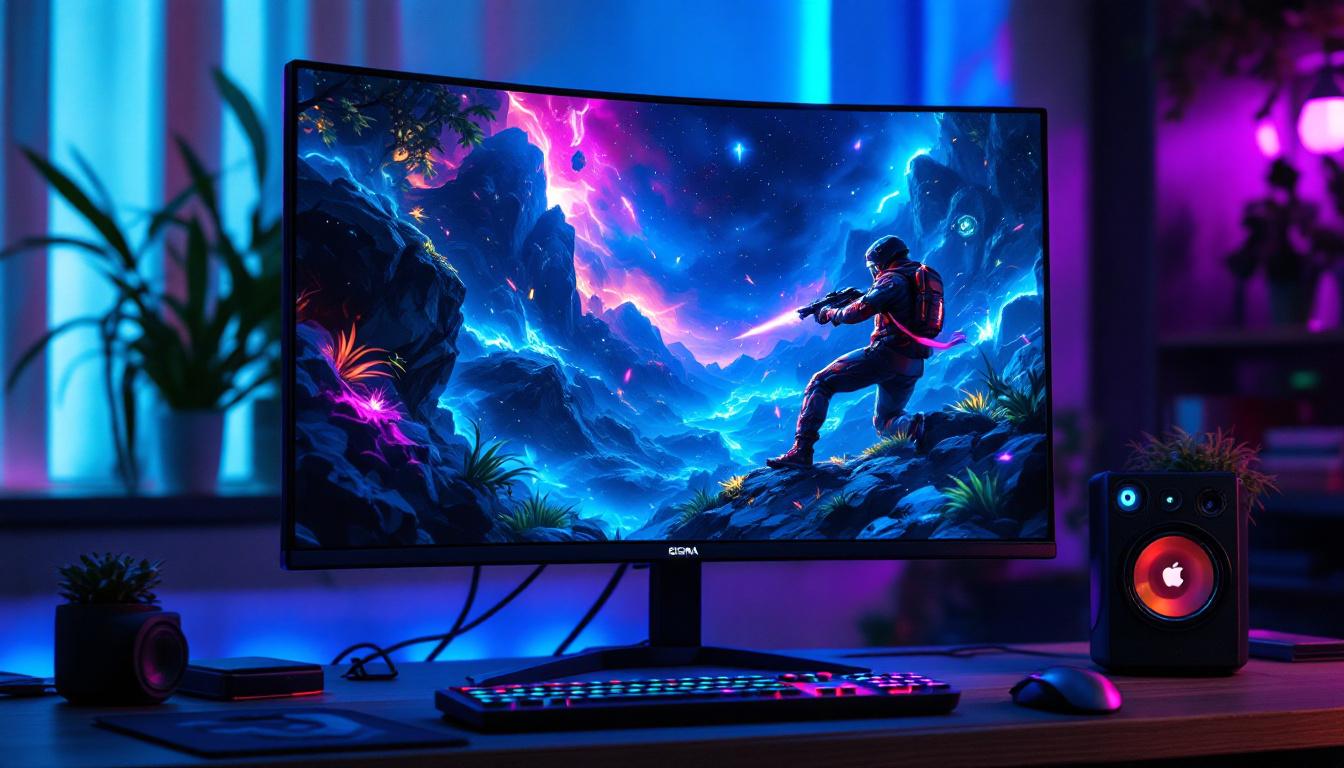How Do LED TVs Work: LED Display Explained
In the realm of modern technology, LED TVs have emerged as a popular choice for consumers seeking high-quality visual experiences. But how do these devices work? This article delves into the intricacies of LED display technology, explaining the fundamental principles that make LED TVs a preferred option for many households.
Understanding the Basics of LED Technology
LED, or Light Emitting Diode, technology has revolutionized the way we view images on screens. Unlike traditional LCD screens that rely on fluorescent backlighting, LED TVs utilize small diodes to produce light. This fundamental shift not only enhances picture quality but also improves energy efficiency. The transition to LED technology has also contributed to a significant reduction in the carbon footprint associated with television production and usage, making it a more environmentally friendly choice for consumers.
What is an LED?
At its core, an LED is a semiconductor device that emits light when an electric current passes through it. This process is known as electroluminescence. LEDs are compact, durable, and energy-efficient, making them ideal for use in televisions. The brightness and color quality of the light emitted by LEDs are significantly better than that of traditional bulbs, leading to sharper and more vibrant images on the screen. Additionally, the lifespan of an LED can reach up to 25,000 hours or more, which means less frequent replacements and lower maintenance costs for users.
The Role of Backlighting
In LED TVs, backlighting is crucial for illuminating the screen. There are two primary types of backlighting used in LED TVs: edge-lit and full-array. Edge-lit LED TVs have LEDs positioned along the edges of the screen, which light up the display from the sides. This design allows for thinner screens but can sometimes result in uneven lighting. Moreover, edge-lit models are often more affordable, making them a popular choice for budget-conscious consumers.
On the other hand, full-array LED TVs have a grid of LEDs behind the entire screen, providing more uniform lighting and better contrast. This setup allows for local dimming, where specific areas of the screen can be dimmed or brightened independently, enhancing the overall picture quality. Full-array technology not only improves the viewing experience during dark scenes but also supports HDR (High Dynamic Range) content, which offers a wider range of colors and brightness levels. As a result, viewers can enjoy a more immersive experience, with details in shadows and highlights that were previously lost in standard displays.
Types of LED TVs
LED TVs can be categorized into several types based on their technology and features. Understanding these types can help consumers make informed decisions when purchasing a new television.
Standard LED TVs
Standard LED TVs are the most common type, utilizing either edge-lit or full-array backlighting. They offer good picture quality and are typically more affordable than other advanced technologies. These TVs are suitable for everyday viewing and provide a decent experience for most users. The edge-lit models are thinner and lighter, making them ideal for wall mounting, while full-array models often deliver better uniformity in brightness and contrast due to their more extensive backlighting system.
Moreover, many standard LED TVs come equipped with smart features, allowing users to access streaming services and apps directly from their television. This integration of technology enhances the viewing experience, making it easier to enjoy a variety of content without the need for additional devices. As a result, standard LED TVs remain a popular choice for families and casual viewers who want a reliable and versatile option.
QLED and OLED TVs
QLED (Quantum Dot LED) and OLED (Organic Light Emitting Diode) TVs represent the next level of display technology. QLED TVs use quantum dots to enhance color and brightness, resulting in stunning visuals. They retain the LED backlighting system, allowing for improved performance in bright environments. This makes QLED TVs particularly appealing for viewers who enjoy watching television in well-lit rooms, as they can produce vibrant colors and maintain clarity even in challenging lighting conditions.
In contrast, OLED TVs do not require backlighting. Each pixel emits its own light, enabling true blacks and exceptional contrast ratios. This technology provides an immersive viewing experience, particularly in dark settings, making OLED TVs highly sought after by cinephiles and gamers alike. Additionally, OLED panels are known for their wide viewing angles, meaning that the picture quality remains consistent even when viewed from the side. As a result, these TVs are often favored for home theaters and gaming setups, where the quality of the display can significantly enhance the overall experience.
How LED TVs Display Images
The process of displaying images on an LED TV involves several steps, from receiving a signal to rendering the final picture. Understanding this process can shed light on the technology behind LED displays.
Signal Reception
LED TVs receive signals from various sources, including cable boxes, streaming devices, and antennas. These signals are typically transmitted in digital format, which is then processed by the TV’s internal hardware. The quality of the signal can significantly impact the final image displayed on the screen.
Image Processing
Once the signal is received, the TV’s processor takes over. This component is responsible for decoding the signal and converting it into a format suitable for display. Advanced image processing technologies, such as upscaling and motion smoothing, enhance the viewing experience by improving image clarity and reducing motion blur.
Moreover, many modern LED TVs come equipped with artificial intelligence (AI) capabilities that analyze the content being viewed and automatically adjust settings for optimal performance. This ensures that viewers enjoy the best possible picture quality, regardless of the source material.
Color and Brightness in LED Displays
Color accuracy and brightness are two critical factors that contribute to the overall quality of an LED TV. Understanding how these elements work together can help consumers appreciate the technology behind their screens.
Color Reproduction
LED TVs utilize a combination of red, green, and blue (RGB) LEDs to create a full spectrum of colors. By adjusting the intensity of each color, the TV can produce a wide range of hues, allowing for vibrant and lifelike images. However, color accuracy can vary between different models and brands, making it essential for consumers to research and compare options before making a purchase.
Brightness Levels
Brightness is measured in nits, with higher numbers indicating a brighter display. LED TVs are known for their ability to produce high brightness levels, making them suitable for viewing in well-lit environments. Full-array LED TVs, in particular, excel in this area due to their localized dimming capabilities, which enhance contrast and detail in bright scenes.
The Advantages of LED TVs
LED TVs offer numerous advantages over traditional display technologies, making them a popular choice among consumers. Here are some key benefits that contribute to their widespread appeal.
Energy Efficiency
One of the most significant advantages of LED TVs is their energy efficiency. Compared to older technologies, such as CRT or plasma displays, LED TVs consume less power while providing superior brightness and color quality. This not only reduces electricity bills but also contributes to a smaller carbon footprint.
Thin and Lightweight Design
LED technology allows manufacturers to create thinner and lighter televisions, making them easier to mount on walls or place in various settings. This sleek design is aesthetically pleasing and offers flexibility in terms of placement and setup.
Common Misconceptions About LED TVs
Despite their popularity, there are several misconceptions surrounding LED TVs. Addressing these misunderstandings can help consumers make more informed choices.
LED TVs Are the Same as OLED TVs
Many consumers mistakenly believe that LED TVs and OLED TVs are the same. While both technologies use LEDs, they function differently. LED TVs rely on backlighting, whereas OLED TVs have self-emissive pixels that produce their own light. This fundamental difference results in varying picture quality, contrast, and viewing angles.
Higher Resolution Equals Better Quality
Another common misconception is that higher resolution always equates to better picture quality. While resolution plays a role in image clarity, factors such as color accuracy, brightness, and contrast are equally important. A lower resolution TV with excellent color reproduction may provide a better viewing experience than a higher resolution model with poor performance in these areas.
Maintaining Your LED TV
Proper maintenance can extend the lifespan of an LED TV and ensure optimal performance. Here are some tips for keeping your television in top condition.
Regular Cleaning
Dust and fingerprints can accumulate on the screen, affecting picture quality. Use a microfiber cloth to gently clean the screen, avoiding harsh chemicals that could damage the display. Additionally, dust the surrounding areas and vents to prevent overheating.
Optimal Settings
Adjusting the TV’s settings can significantly enhance the viewing experience. Many LED TVs come with preset modes, such as cinema or sports, which optimize picture quality for different types of content. Experimenting with these settings can help users find the best configuration for their preferences.
Future Trends in LED Technology
The world of LED technology is continually evolving, with new advancements on the horizon. As manufacturers strive to improve performance and enhance user experiences, several trends are emerging.
MicroLED Technology
MicroLED technology is gaining traction as a potential successor to traditional LED displays. This innovative approach uses microscopic LEDs to create individual pixels, resulting in exceptional brightness, contrast, and color accuracy. MicroLED displays promise to deliver the benefits of OLED without the drawbacks, such as burn-in issues.
Smart TV Integration
As the demand for smart TVs continues to grow, LED TVs are increasingly incorporating advanced features such as voice control, streaming capabilities, and integration with smart home devices. This trend enhances the user experience, allowing for seamless access to content and control over the viewing environment.
Conclusion
LED TVs have transformed the way people experience visual content, offering superior picture quality, energy efficiency, and sleek designs. By understanding the technology behind LED displays, consumers can make informed decisions when selecting a television that meets their needs. As advancements in LED technology continue to emerge, the future of television looks brighter than ever.
Explore Cutting-Edge LED Displays with LumenMatrix
As you consider the future of television and the potential of LED technology in transforming your visual experiences, LumenMatrix stands at the forefront of innovation. With a commitment to revolutionizing visual communication, LumenMatrix offers a comprehensive range of LED display solutions, from Indoor and Outdoor LED Wall Displays to specialized options like Vehicle, Sports, and Floor LED Displays. Whether you’re looking to enhance brand visibility or create immersive environments, LumenMatrix’s state-of-the-art LED modules are designed to captivate audiences and deliver your message with unparalleled impact. Check out LumenMatrix LED Display Solutions today and see how you can bring clarity and engagement to your space.


